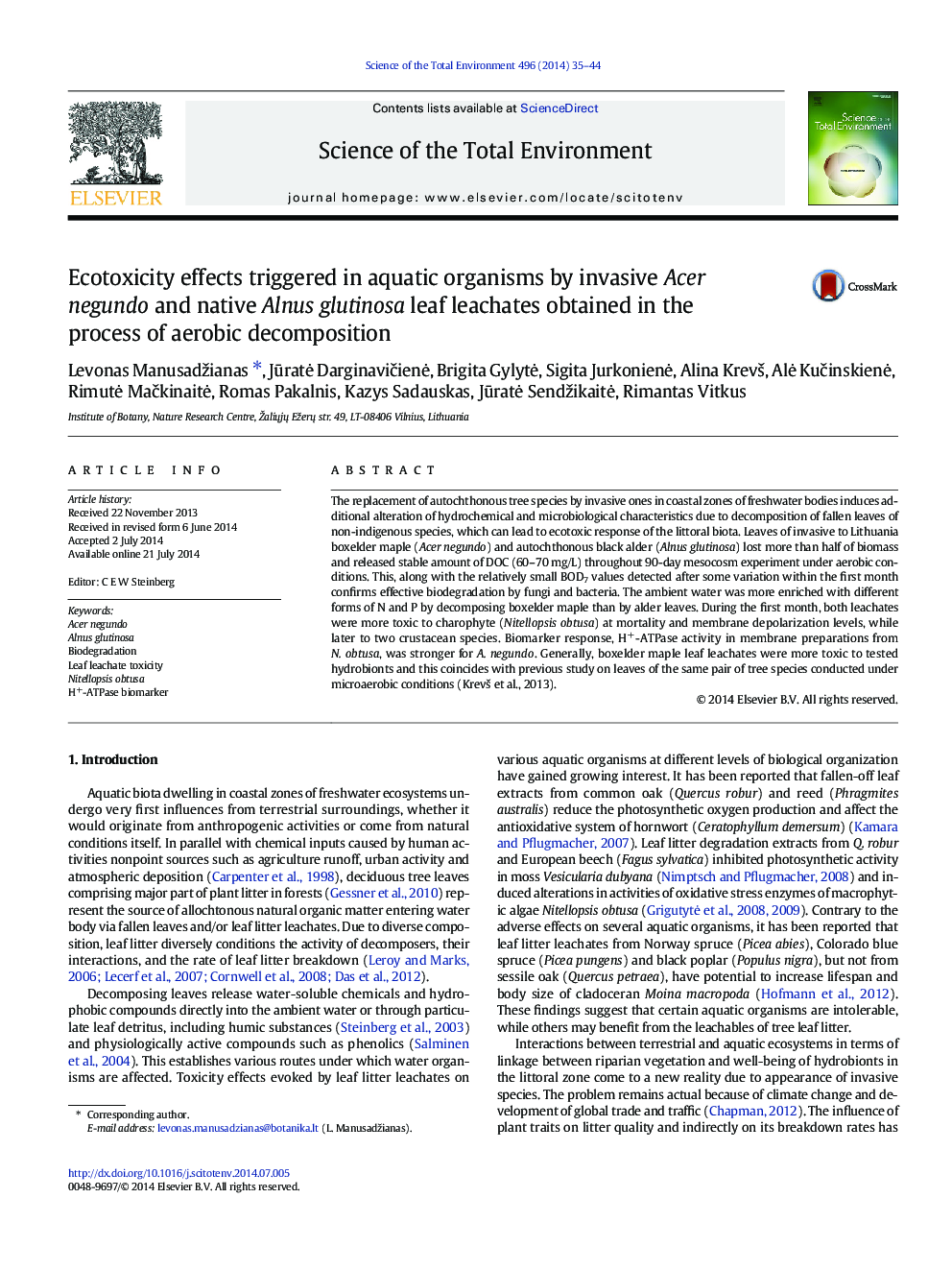| Article ID | Journal | Published Year | Pages | File Type |
|---|---|---|---|---|
| 6329399 | Science of The Total Environment | 2014 | 10 Pages |
The replacement of autochthonous tree species by invasive ones in coastal zones of freshwater bodies induces additional alteration of hydrochemical and microbiological characteristics due to decomposition of fallen leaves of non-indigenous species, which can lead to ecotoxic response of the littoral biota. Leaves of invasive to Lithuania boxelder maple (Acer negundo) and autochthonous black alder (Alnus glutinosa) lost more than half of biomass and released stable amount of DOC (60-70 mg/L) throughout 90-day mesocosm experiment under aerobic conditions. This, along with the relatively small BOD7 values detected after some variation within the first month confirms effective biodegradation by fungi and bacteria. The ambient water was more enriched with different forms of N and P by decomposing boxelder maple than by alder leaves. During the first month, both leachates were more toxic to charophyte (Nitellopsis obtusa) at mortality and membrane depolarization levels, while later to two crustacean species. Biomarker response, H+-ATPase activity in membrane preparations from N. obtusa, was stronger for A. negundo. Generally, boxelder maple leaf leachates were more toxic to tested hydrobionts and this coincides with previous study on leaves of the same pair of tree species conducted under microaerobic conditions (Krevš et al., 2013).
